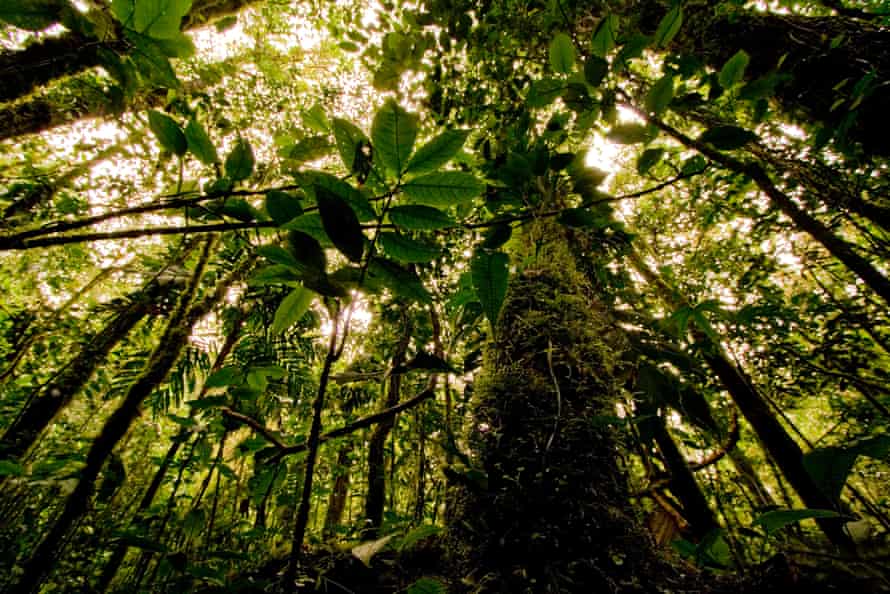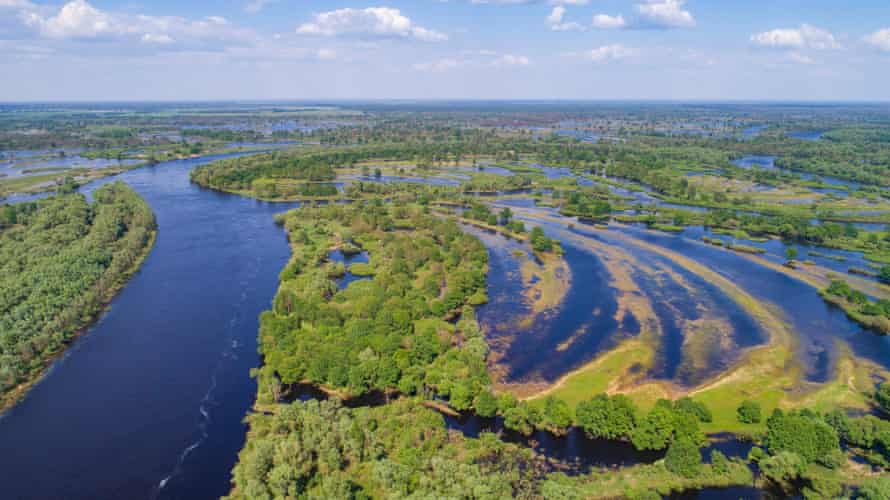Record $5bn donation to protect nature could herald new green era of giving
Philanthropists pledge to protect 30% of land and sea by 2030, as the planet’s health climbs the charity agenda

Last modified on Wed 29 Sep 2021 09.02 EDT
When their time comes, many of the richest people on Earth have committed to giving away the bulk of their fortunes. Education, poverty and the arts have traditionally benefited from philanthropy, attracting billions for important causes. But increasingly, nature and the climate crisis have become a focus of giving.
Last week, a group of nine philanthropic foundations made the largest ever donation to nature conservation, pledging $5bn to finance the protection of 30% of land and sea by the end of the decade. Swiss businessman Hansjorg Wyss, also a major donor to progressive causes in the US, and Amazon founder Jeff Bezos were among the billionaires behind the Protecting our Planet challenge. In effect, the money covers the estimated cost of the 30% goal for this decade, one of the 21 targets included in the draft Paris-style UN agreement for nature currently being negotiated. It also includes plans to eliminate plastics pollution and reduce pesticide use to slow species extinctions.
“We can solve the crisis facing nature,” Wyss said at the launch. “But it’s going to take the wealthiest nations and the wealthiest individuals committing to reinvest our enormous bounties here on Earth, safeguarding nature and protecting our lands, waters and wildlife.”
Despite high-profile examples, environmental philanthropy remains dwarfed by other areas, accounting for only about 8% of giving, according to the NGO Rockefeller Philanthropy Advisors. Contributions explicitly to conservation and to protect biodiversity have been even more neglected. But there are signs that this is changing.
Before his death in 2015, The North Face co-founder Douglas Tompkins bought enormous areas of Patagonia and his widow Kris continues their conservation work, helping to create in Chile one of the largest protected areas in the world. Danish billionaires Anders and Anne Holch Povlsen, Scotland’s largest landowners, plan to rewild vast areas of the Highlands. And the growing urgency of scientific warnings over the twin climate and nature crises have meant more are following in their footsteps.
“None of us can do everything but everyone must do something,” says Salesforce CEO Marc Benioff, worth an estimated $10bn, who created and funds the World Economic Forum’s trillion tree initiative to plant and restore forests around the world. “That is why so many new initiatives are being created and also why I am aggressively funding 1t.org.”

When they announced the $5bn for the 30×30 target, the foundations emphasised the importance of rights-based conservation and indigenous communities. New indigenous-led protected areas in Canada will be created in the James Bay, Hudson Bay and Labrador Sea regions, home to beluga whales, polar bears and walruses. Through his Earth Fund, Bezos said he would initially focus on high-impact projects in the tropical Andes, the Congo Basin and the Pacific Ocean in regions that have already demonstrated a commitment to protecting human rights.
How money is spent and the focus of the philanthropy can be controversial. But Basile van Havre, the UN diplomat responsible for drafting the agreement on nature for this decade, which will be at the heart of the Cop15 UN biodiversity talks in Kunming, says philanthropic donations allow governments to focus on the many more billions in harmful environmental subsidies that need to be repurposed, and make difficult decisions on agriculture, pesticide use and pollution.
“It’s a massive amount coming from non-government entities. Governments should do the lion’s share of the increase in funding but I don’t think I’ve ever seen such a big amount coming from non-government organisations,” Van Havre tells the Guardian, adding the donations will create momentum around the talks, and contribute to the estimated $700bn a year financing gap for nature. “They’re mainly interested in the 30×30. But this is fine. We can spend that money on 30×30 and we allocate other funds to other priorities.”
A 2020 survey of philanthropists by Rockefeller Philanthropy Advisors and Campden Wealth, whose respondents had average net wealth of $1.2bn, showed education and poverty were more popular focuses of giving among the super-rich, with the environment registering ninth in terms of priorities. But Rockefeller Philanthropy Advisors’ CEO, Melissa Berman, says that is changing.
“It is still an extremely small part of philanthropic flows, including in the US,” she says. “Traditional categories were that people thought about conserving land and water. They thought about conserving species and then only relatively recently, people started thinking differently about the environment in terms of climate change.”
Dr Rebecca Gooch, senior director of research at Campden Wealth says: “Wealth holders are becoming increasingly aware of the importance of environmental conservation, as threats such as deforestation, pollution and biodiversity loss increase.”

Ben Goldsmith, brother of the UK environment minister Zac Goldsmith, is among those leading calls for wealthy individuals to step in and commit to tackling environmental degradation in the UK. In June, he signed up to a letter calling for the country’s richest families to invest in nature. In 2020, individuals and charities in the UK gave GBP250m to environmental causes, less than 4% of total charitable funding.
Unlike some philanthropic causes, Goldsmith explains that a big benefit of supporting rewilding and conservation schemes is how much can be achieved with modest amounts of money.
“It’s really cheap to fix nature. Nature is an incredibly powerful force. It recovers itself very quickly if you give it space. It’s not like building a hospital brick by brick, machine by machine. No huge investment is required to make things happen with nature. It’s actually relatively modest.”
Berman is optimistic that the announcement last week could bring change in the way big donors choose to spend their money. “The big hope is that [the $5bn donation] inspires lots of people who are on the sidelines with lots of philanthropic resources to recognise that this is the right moment to stop thinking about it and start acting,” she says.
